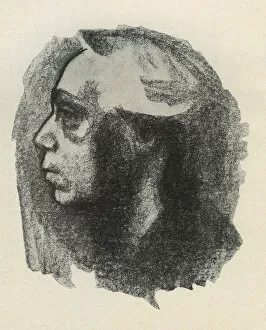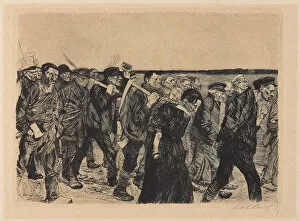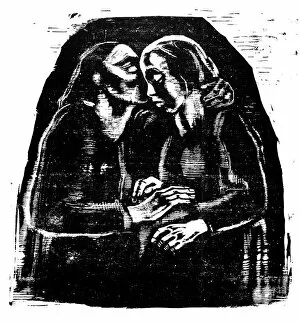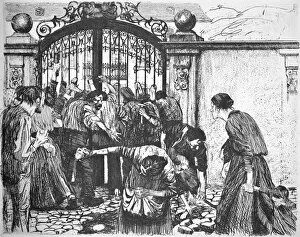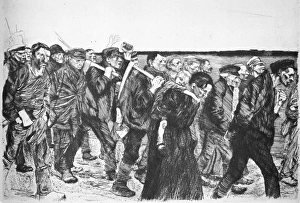Kollwitz Collection
Kathe Kollwitz, a renowned German artist (1867-1945), used her powerful and emotive artworks to convey important social and political messages
All Professionally Made to Order for Quick Shipping
Kathe Kollwitz, a renowned German artist (1867-1945), used her powerful and emotive artworks to convey important social and political messages. In her piece "Down with the Abortion Paragraphs. " from 1923, Kollwitz boldly addresses the contentious issue of abortion. With her signature style, she portrays the anguish and desperation faced by women in a society that denied them control over their own bodies. "Help Russia, " created in 1921, showcases Kollwitz's compassion for those suffering during tumultuous times. Through this artwork, she expresses solidarity with the Russian people who were enduring immense hardships after the Bolshevik Revolution. Her poignant portrayal serves as a call to action for viewers to lend support and aid to those in need. In her commemorative sheet for Karl Liebknecht from 1920, Kollwitz pays homage to an influential figure in German socialist politics. By immortalizing Liebknecht through art, she highlights his contributions while also shedding light on the turbulent political climate of that era. Kollwitz's early works such as "You Bleed from Many Wounds, Oh People" (1896) and "March of the Weavers" (1897) depict scenes inspired by real-life events during Germany's industrial revolution. These pieces capture both the physical struggles endured by workers and their collective spirit of resistance against oppressive conditions. One of Kollwitz's most notable series is "Uprising of the Weavers" (1893-1897). This body of work delves deeper into depicting labor movements and uprisings among weavers during this period. Through these artworks, she sheds light on social inequality while championing justice for marginalized communities. The woodcut titled "Mary and Elizabeth" from 1928 showcases Kollwitz's mastery at capturing intimate moments between individuals. Here she depicts two women embracing each other, symbolizing the strength and support found in female relationships.

